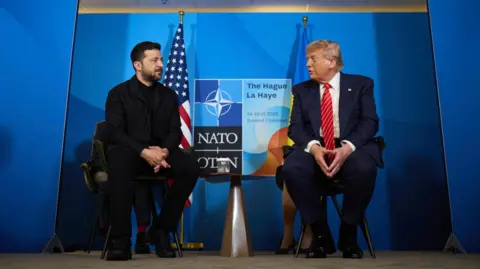The ongoing conflict in Ukraine has seen a significant strategic shift, as announced by the White House. The US government has decided to halt some weapons shipments to Kyiv amid intensifying hostilities from Russia, marking a noteworthy development in the dynamics of military support provided to Ukraine. According to White House spokesperson Anna Kelly, this decision came as an outcome of a review by the Department of Defense focused on military assistance to international allies, prioritizing what officials described as “America’s interests first.”
Since the full-scale invasion of Ukraine by Russia in February 2022, the US has committed tens of billions of dollars in military aid to Ukraine. However, this substantial outlay has raised concerns among some officials within the Trump administration regarding the depletion of US weapon stockpiles. Although there was no immediate comment from the Ukrainian government regarding the suspension of arms shipments, US officials did not specify which particular shipments would be affected, although reports suggested that critical assets, including air defense missiles and precision munitions, might be among them.
In response to this decision, Elbridge Colby, the US Undersecretary of Defense for Policy, affirmed that the Department of Defense remains committed to providing robust military options to sustain aid to Ukraine. He acknowledged the need for a comprehensive review of the current support strategies while ensuring that US forces are adequately prepared for national defense requirements. The decision to stall certain shipments appears grounded in practical assessments concerning US military readiness and the adequacy of existing resources.
In the backdrop of this shift, President Trump recently met his Ukrainian counterpart, President Volodymyr Zelensky, during the NATO summit held in the Netherlands. This encounter, which followed a historically contentious exchange between the two leaders earlier in March, involved discussions on the potential for supplying additional Patriot anti-missile systems to Ukraine. Trump’s remarks about their interactions have been framed upon a pledge that the US would explore feasible means of military support.
The decision aligns with a more significant pattern observed following earlier pauses in military assistance under previous administrative policies. Notably, there had been a temporary cessation of intelligence sharing with Ukraine that was ultimately reversed, thereby signaling the fluidity of US military collaboration with Kyiv. In a recent bilateral agreement signed in late April, the US secured access to Ukraine’s mineral resources in exchange for continued military support, exemplifying the intertwining of economic and military interests between the two nations.
In parallel developments, French President Emmanuel Macron held discussions with Russian President Vladimir Putin, marking their first conversation in over two and a half years. Macron urged for a ceasefire in Ukraine, while Putin countered by blaming Western nations for the escalating conflict. This dialogue underscores the need for diplomatic engagement amidst a backdrop of renewed military offensives between Russia and Ukraine.
As the situation unfolds, it remains imperative to consider the implications of this US policy adjustment. Russian forces recently executed one of their largest aerial assaults on Ukraine, deploying an extensive array of weaponry. The ramifications of the US halting specific arms aid could potentially impact Ukraine’s defensive posture, particularly in light of ongoing assaults that have tragically led to civilian casualties, including a recent incident where three fatalities occurred due to a Ukrainian strike on a Russian facility far from the front lines.
Currently, estimates suggest that Moscow occupies approximately 20% of Ukrainian territory, including regions annexed since 2014, thus aggravating the humanitarian landscape and the global geopolitical puzzle. With both military and diplomatic efforts constantly shifting, these developments highlight the complexities and challenges facing nations involved in or affected by the conflict. As the international community continues to watch closely, the situation calls for cautious navigation through a tangled web of alliances, defense readiness, and humanitarian considerations in one of the most intricate conflicts of our time.









